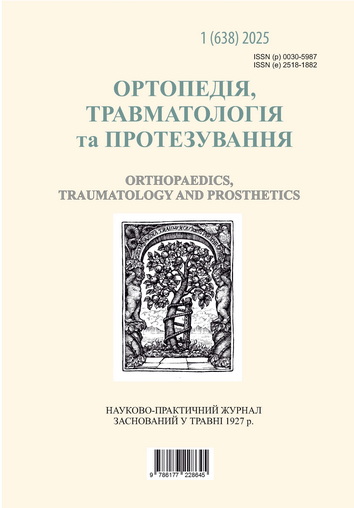THE IMPACT OF PREOPERATIVE VOLUME OVERLOAD ON HEMODYNAMIC PARAMETERS DURING SHOULDER ARTHROSCOPY
DOI:
https://doi.org/10.15674/0030-59872025145-49Keywords:
Semi-sitting position, general anesthesia, infusion therapy, arthroscopyAbstract
Objective. To investigate the influence of preoperative volemic loading on changes in hemodynamic parameters due to positioning of anesthetized patients in the beach chair position. Methods. A prospective randomized single-center study included 140 patients. Group I (n = 70) — patients who underwent preoperative loading in a volume of 12 ml/kg before changing the body position. Group II (n = 70) — patients who did not undergo preoperative loading. After induction with propofol/fentanyl in standard doses and orotracheal intubation, the patient was transferred from the supine position to the BCP. Non-invasive systolic blood pressure (SBP), diastolic blood pressure (DBP), mean arterial pressure (MAP), and heart rate were determined using a Mediana YM6000 monitor. The first measurement of SBP, DBP, and MAP was performed immediately after positioning the patient supine, the second after induction, the third 5 minutes after positioning in the NSP, and subsequently blood pressure measurements were performed every 5 minutes, heart rate, and SpO2 continuously. In the postoperative period, the following criteria were evaluated: frequency of nausea/vomiting, frequency of orthostatic collapse within 48 hours, average heart rate within 6 hours. Results. Induction of general anesthesia caused comparable changes in hemodynamics in patients of the studied groups without significant differences between groups. When changing the body position in the BCP, hemodynamic changes had significant differences between groups. Only 7.1 % of the subjects in group I had nausea and vomiting in the early postoperative period, while in group II 21.4 % of patients had nausea and vomiting. The development of tachycardia was noted during the first 6 hours after surgery in patients in group II (95.0 ± 5.8), compared with group I (70.3 ± 6.5) (p < 0.001). The development of orthostatic collapse was observed more often in patients in group II and amounted to 14.3 % vs. 10.0 % of the subjects in group I. Conclusions. Preoperative infusion loading does not significantly affect hemodynamic reactions that occur during induction of general anesthesia in young patients ASA I-II. Preoperative infusion loading during operations in a BCP significantly reduces the number of early postoperative complications: postoperative nausea and vomiting, orthostatic collapse and the development of tachycardia.
Downloads
How to Cite
Issue
Section
License
Copyright (c) 2025 Kseniia Lyzogub, Mykola Lyzogub

This work is licensed under a Creative Commons Attribution 4.0 International License.
The authors retain the right of authorship of their manuscript and pass the journal the right of the first publication of this article, which automatically become available from the date of publication under the terms of Creative Commons Attribution License, which allows others to freely distribute the published manuscript with mandatory linking to authors of the original research and the first publication of this one in this journal.
Authors have the right to enter into a separate supplemental agreement on the additional non-exclusive distribution of manuscript in the form in which it was published by the journal (i.e. to put work in electronic storage of an institution or publish as a part of the book) while maintaining the reference to the first publication of the manuscript in this journal.
The editorial policy of the journal allows authors and encourages manuscript accommodation online (i.e. in storage of an institution or on the personal websites) as before submission of the manuscript to the editorial office, and during its editorial processing because it contributes to productive scientific discussion and positively affects the efficiency and dynamics of the published manuscript citation (see The Effect of Open Access).














